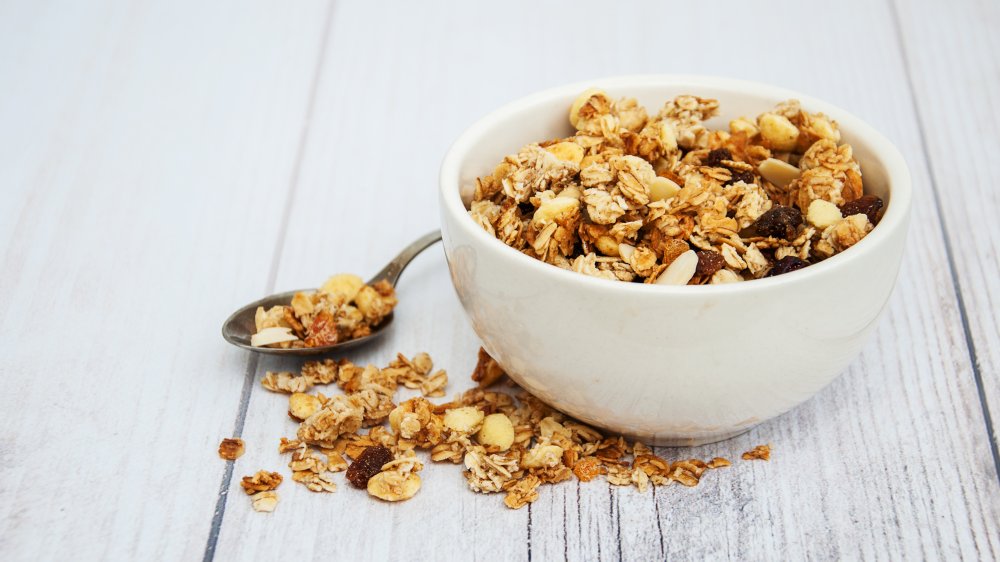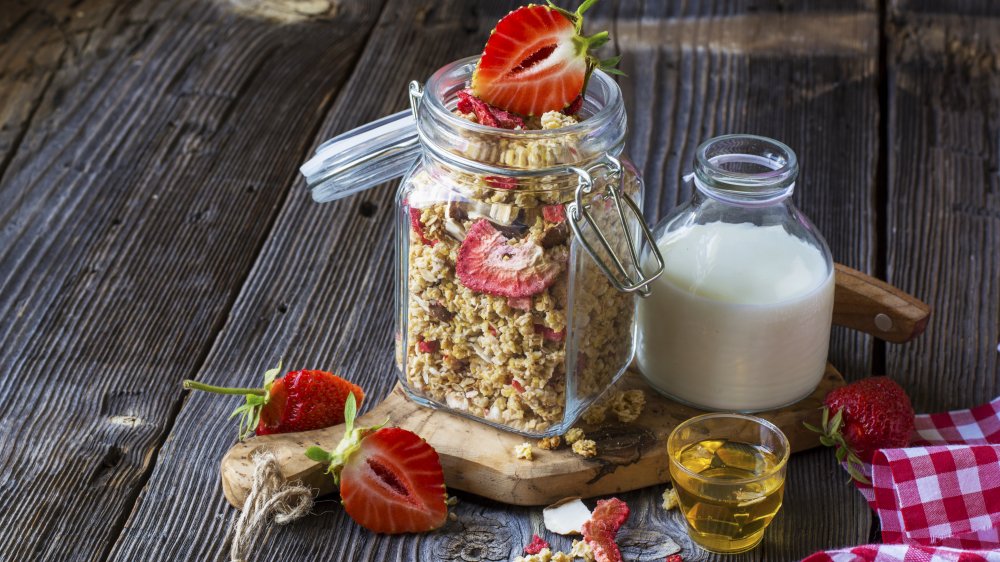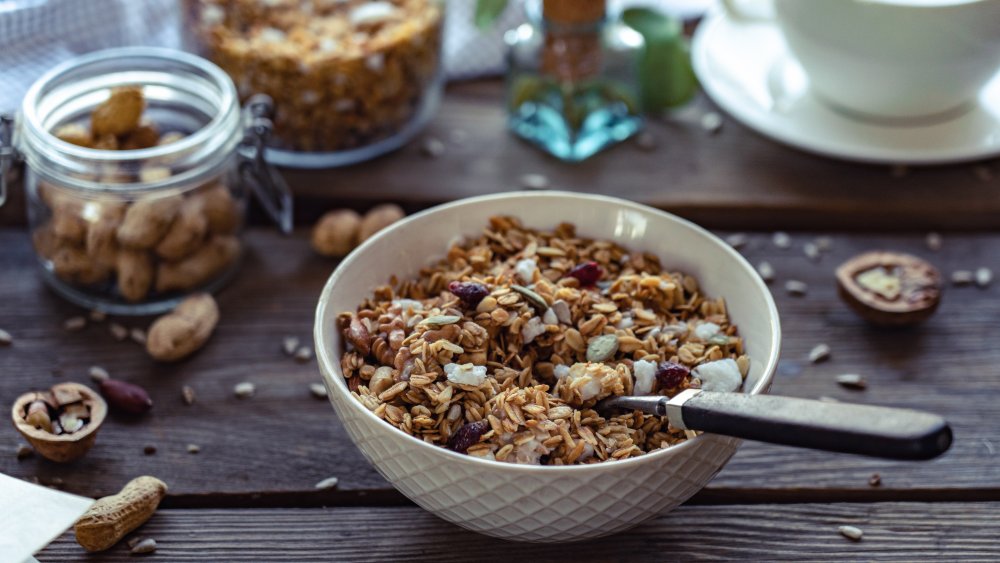Granola Isn't As Healthy As You Think It Is. Here's Why
The word "granola" conjures up not just a healthy breakfast, but health itself; you don't just eat granola; you can be granola. We so closely associate this cereal with wellness that we use this term "granola" or "crunchy" to refer not only to the food, but also to an entire lifestyle of clean eating and nature-loving (per Slangit). But is this cereal, which is made from oats baked with honey — and sometimes with dried fruit, nuts or nut butter, or seeds thrown in — actually healthy? While the ingredients may indeed be wholesome, experts say that granola isn't the best choice for those of us who are worried about our waistlines.
"Granola is a food that we have been led to believe is quite good for us but could be a real problem food for those trying to manage their weight," registered dietitian Andy De Santis told Global News. "Granola is, in most cases, simply oatmeal that has significant amounts of oil and sugar added to it such that it tastes amazing, but will cost you far more calories."
Granola is good for fueling a long workout — not your everyday morning hustle
One reason why people think of granola as "healthy" is because it's traditionally been eaten by epically healthy people. Hikers, runners, and other outdoor enthusiasts grab a bowl of 'nola to fuel up for an especially vigorous workout. "For active people, granola is best known for being a source of carbohydrate to fuel the muscles and provide energy for a busy day," Nancy Clark, a sports nutrition counselor and registered dietitian based in Boston, told Time. "Grains are excellent for athletic people to fuel muscles."
If indeed, you've got a mountain to scale today, granola is a great way to power through your morning. But if you're eating a bowl of granola to get ready to coax your sluggish poodle for a walk around the block, you probably don't need to eat a breakfast that has 260 calories per 1/3 cup, in the case of Gypsy Crunch Roasted Granola; Kellogg's Low Fat Granola, meanwhile, has 195 calories per 1/2 cup serving, but both of these cereals are much more caloric than non-granola options at the supermarket (per Healthline).
It's easy to over-eat granola
Another reason why granola isn't a great option for those of us who aren't spending hours every day exercising is that chances are, you're pouring a lot more into your bowl than the recommended serving size. That's because granola is much denser than lighter-weight breakfast cereals, meaning it doesn't look like it takes up that much space in your bowl, so you'll dump in more of it than you would if you were eating, say, Cheerios. In fact, in a Consumer Reports test of 124 consumers who were given a light-density, medium-density, and a high-density cereal to pour into bowls, found that the average overpour rate was 292 percent for the high-density option, which was Quaker Simply Oats, Honey, Raisins & Almonds, a granola variety.
These results didn't surprise other nutrition experts. "The serving size for granola is about 1/3 to 1/2 cup. If you eat it for breakfast with milk, you're probably having 2 cups or more," registered dietitian Natalie Rizzo told PopSugar. "It's got a decent amount of sugar and calories, so having that amount can be problematic."
But that doesn't mean you have to ban granola from your pantry. Instead of eating granola by the bowl, Rizzo recommends using a measuring cup to portion out an accurate serving size of this sweet, whole-grain treat, then mix it with protein-rich Greek yogurt.



